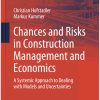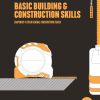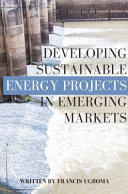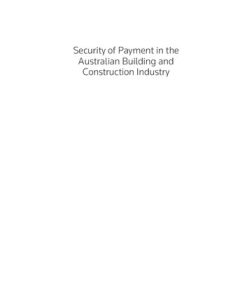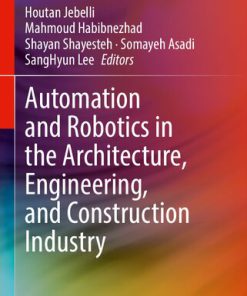Emerging Debates in the Construction Industry The Developing Nations Perspective 1st Edition by Ernest Kissi, Clinton Aigbavboa, Wellington Didibhuku Thwala ISBN 9781000880694 1000880699
$50.00 Original price was: $50.00.$25.00Current price is: $25.00.
Emerging Debates in the Construction Industry The Developing Nations Perspective 1st Edition by Ernest Kissi, Clinton Aigbavboa, Wellington Didibhuku Thwala – Ebook PDF Instant Download/Delivery: 9781000880694 ,1000880699
Full download Emerging Debates in the Construction Industry The Developing Nations Perspective 1st Edition after payment

Product details:
ISBN 10: 1000880699
ISBN 13: 9781000880694
Author: Ernest Kissi, Clinton Aigbavboa, Wellington Didibhuku Thwala
Emerging Debates in the Construction Industry The Developing Nations Perspective 1st Edition Table of contents:
Part I: Sustainability: Social, Economic and Environmental
1 Diversity and Inclusion in the Construction Industry: The Vulnerability Factor
1.1 Introduction
1.2 The vulnerability concept
1.3 Inclusion of the vulnerable in the construction industry
1.4 Challenges faced by the vulnerable in their inclusion
1.5 Strategies for the inclusion of the vulnerable
1.6 Framework toward inclusion and diversity in the construction industry
1.7 Conclusion
References
2 Pandemics and the Construction Industry in Developing Countries
2.1 Introduction
2.2 Brief history of pandemics: Understanding pandemics
2.3 Pandemics in Africa
2.4 Impacts of pandemics on the economic growth of Africa
2.5 Measures for addressing the impacts of pandemics in Africa
2.6 Conclusion
References
3 Collaborative Flow of Work in the Construction Industry
3.1 Introduction
3.2 Evolution and progress in collaborative workflow
3.3 Attributes of collaborative workflow, planning, and management
3.4 Challenges faced in team and inter-organisational collaborative workflow
3.5 Tools for collaborative workflow integration
3.6 Conclusion and implications
References
4 Green Financing of Infrastructure Projects in the Construction Industry: Case of Sub-Saharan Africa
4.1 Introduction
4.2 Understanding green finance
4.3 Economic factors underpinning green financing of infrastructure projects
4.4 Environmental factors underlying green financing adoption of infrastructure projects
4.5 Approaches to green financing of infrastructure projects in the construction industry
4.6 Conclusion
References
5 Espousal of Zero Carbon Emission in Buildings: Empirical Analysis of Propelling Measures
5.1 Introduction
5.2 Carbon emissions in buildings
5.3 Research methodology
5.4 Discussion of the drivers
5.5 Conclusion and recommendations
References
Part II: 4th Industrial Revolution
6 Overview of the 4th Industrial Revolution in the Construction Industry
6.1 Introduction
6.2 4th Industrial Revolution
6.3 Construction 4.0
6.4 Barriers to the adoption of Construction 4.0 in developing countries
6.5 Conclusion
References
7 Digital Capabilities in the Construction Industry
7.1 Introduction
7.2 Theories for digital capabilities
7.3 Digital construction and digital capabilities in the construction industry
7.4 Enabling approaches to digital capabilities
7.5 Case for digital capabilities in developing countries
7.6 Conclusion
References
8 Skills Development in the 4th Industrial Revolution: The Construction Industry
8.1 Introduction
8.2 The 4th industrial revolution
8.3 Skills development
8.4 The 4th Industrial Revolution and skills development
8.5 Challenges of the integration of the 4th Industrial Revolution in skills development
8.6 Strategies for 4th Industrial Revolution in skills development
8.7 Conclusion
References
9 Mobile Device Applications in the Construction Industry
9.1 Introduction
9.2 Research method
9.3 Mobile apps for built environment professionals
9.4 Discussions
9.5 Conclusion
References
10 Systemic Capacity Building of Built Environment Professionals for Construction 4.0: A Review of Concepts
10.1 Introduction
10.2 Industry 4.0 within the construction industry
10.3 Capacity building for Construction 4.0
10.4 Conclusion
References
11 Competitive Intelligence Features and Competitive Advantage of Construction Firms in the Fourth Industrial Revolution
11.1 Introduction
11.2 Competitive intelligence
11.3 Survey of features of CI for CA in the existing literature
11.4 Methodology
11.5 Discussions
11.6 Conclusion
References
Part III: Health and Safety
12 Transfer of Construction Safety Knowledge to Project Host Communities: Naivety or Plausible?
12.1 Introduction
12.2 Characteristics of knowledge and its transfer
12.3 The construction industry and knowledge transfer
12.4 Construction safety knowledge
12.5 Conceptualising a conceivable safety knowledge transfer
12.6 Why it is a plausible concept?
12.7 Conclusion
Acknowledgements
References
13 Visualization and Interpretation of Resilient Safety Culture: Integrated Social Network Modeling
13.1 Introduction
13.2 Resilient safety culture model
13.3 Research method
13.4 Model application using fault tree analysis and social network analysis
13.5 Discussion
13.6 Conclusion
Acknowledgments
References
Appendix
14 Discomforts Experienced by Construction Workers with Safety Helmet Use: Experiences from the Ghanaian Construction Industry
14.1 Introduction
14.2 Safety helmet discomforts and mitigation strategies
14.3 Methodology
14.4 Results
14.5 Discussion
14.6 Conclusion
References
15 Understanding Safety of Construction Sites: Construction Site Workers’ Experience
15.1 Introduction
15.2 Safety enablers
15.3 Workers’ safety experience on construction sites
15.4 Methodology
15.5 Enablers of safety on construction sites
15.6 Workers’ safety experience
15.7 Study implications
15.8 Conclusion
References
Index
People also search for Emerging Debates in the Construction Industry The Developing Nations Perspective 1st Edition:
emerging construction trends
emerging construction technologies
emerging construction markets
an example of an emerging development in mechanical engineering
debates in engineering
Tags: Ernest Kissi, Clinton Aigbavboa, Wellington Didibhuku Thwala, Emerging Debates, Construction Industry, Developing Nations
You may also like…
Business & Economics
Developing Sustainable Energy Projects in Emerging Markets Ugboma
Uncategorized
Engineering - Civil & Structural Engineering
Commercial & Financial Law
Contract Law in the Construction Industry Context 1st Edition Carl J. Circo
Uncategorized
Security of Payments in the Australian Building Construction Industry 6th Edition Marcus Jacobs Qc
Engineering
Uncategorized
Education Studies & Teaching - Education Management & Organisation
Professional Ethics for the Construction Industry 2nd Edition Rebecca Mirsky

